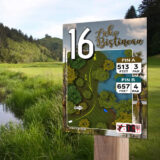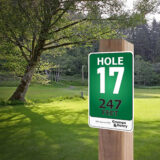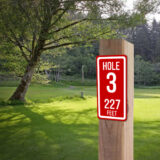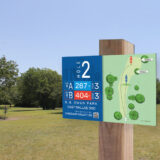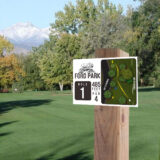The allure of disc golf extends beyond its competitive spirit to the captivating physics governing the flight paths of discs. Envision the complexities of discs in motion, the leftward turn for right-handed throwers, and the nuanced impact of wind resistance on their trajectory. Delve deeper into this fascinating realm where aerodynamics, angular momentum, and wind dynamics converge.
The Physics of Disc Flight: An In-depth Exploration
- Aerodynamic Dynamics of Discs: Discs are meticulously crafted aerodynamic entities, featuring an asymmetrical design akin to an “aerofoil.” This unique shape manipulates air pressure disparities between the upper and lower surfaces, generating lift to sustain flight.
- Angular Momentum and Gyroscopic Stability: Upon release, discs spin rapidly around their axis, creating angular momentum. This gyroscopic stability acts as a stabilizing force, preserving the disc’s orientation mid-flight and thwarting undesired deviations.
- Release Angle’s Influence: The crucial factor influencing a disc’s flight path is the release angle. For right-handed backhand throws, a specific release angle induces a leftward turn, initiating a graceful curve before a controlled fade back to the right.

Deciphering Wind Resistance and Its Impact
- Drag Forces on Discs: As discs traverse through the air, they encounter drag—a resistance opposing their forward motion. The leading edge of the disc bears the brunt of this drag force, dictating its speed and altering its flight trajectory.
- Wind’s Alteration of Trajectory: Headwinds present a formidable challenge, intensifying drag on the disc’s leading edge. This force decelerates the disc and induces an earlier fade or diminished turn. Crosswinds, meanwhile, can forcibly shift the disc off its intended path, posing accuracy challenges mid-flight.
Interplay of Disc Design, Wind, and Flight Response
- Disc Stability Dynamics: Discs possess varying stability levels, influencing their behavior in wind conditions. Overstable discs exhibit greater resistance to turning, rendering them more adept at countering headwinds. Conversely, understable discs might amplify their turn under the influence of increased drag on their leading edge.
- Skillful Adaptations and Mastery: A seasoned player’s arsenal involves adaptive techniques to mitigate wind resistance. Fine-tuning release angles, selecting discs tailored to specific wind patterns, and modulating spin rates are tactical maneuvers to harness control amid diverse wind scenarios.
Disc golf’s allure lies not just in its strategic gameplay, but in the intricate dance between physics and flight dynamics. From the calculated leftward turn for right-handed throwers to the intricate influence of wind resistance on trajectory, every flight is a ballet of aerodynamics and force interplay.
Mastery of these scientific intricacies and the artful manipulation of discs through varied wind conditions can elevate a player’s finesse and precision. Whether observing the mesmerizing arcs of discs or adeptly adapting throws to counter wind resistance, players unlock a realm of heightened accuracy and control within the exhilarating world of disc golf.


